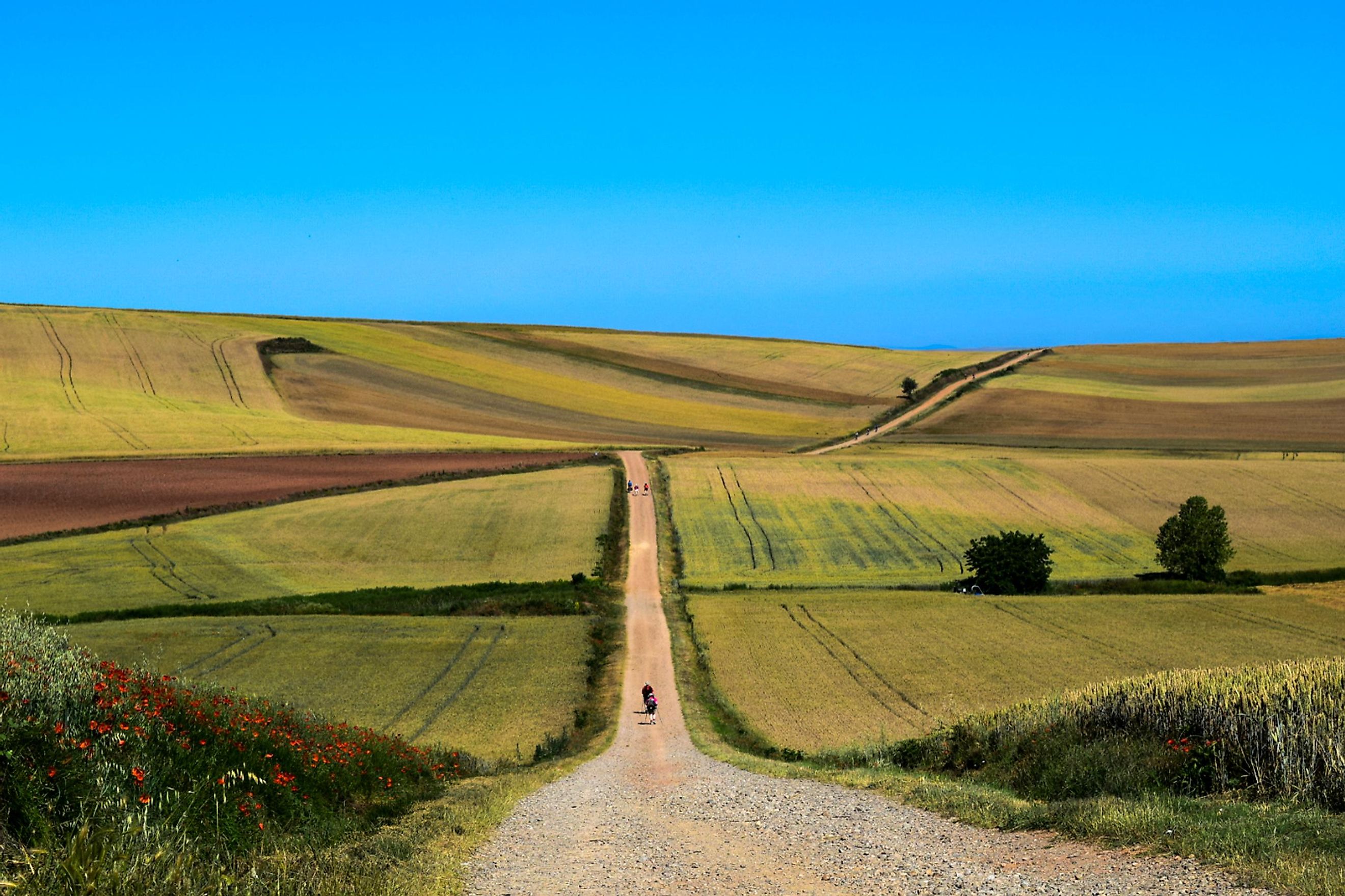
History of the Camino de Santiago
The Camino de Santiago or Way of Saint James, is an umbrella term for a network of pilgrim routes that crisscross through parts of Spain (primarily), France, and Portugal. Regardless of the starting point, the ultimate goal for most who visit here is to reach the Cathedral of Santiago de Compostela, where the remains of Saint James are said to rest. It was the reported discovery of the Apostle's tomb in the early 9th century that kick-started the popular Christian sojourn, but there are also some precursor paths once used by the Romans and the Celts (Gallaeci) that also played into the Camino's development. Nowadays, there are more pilgrims than ever choosing to make lengthy journeys across the Iberian Peninsula – some still inspired by the religious elements, others motivated by the cultural, experiential, and/or physical aspects. Allow us to delve deeper into the millennium-spanning events that have shaped the Camino de Santiago.
The Lore of Saint James
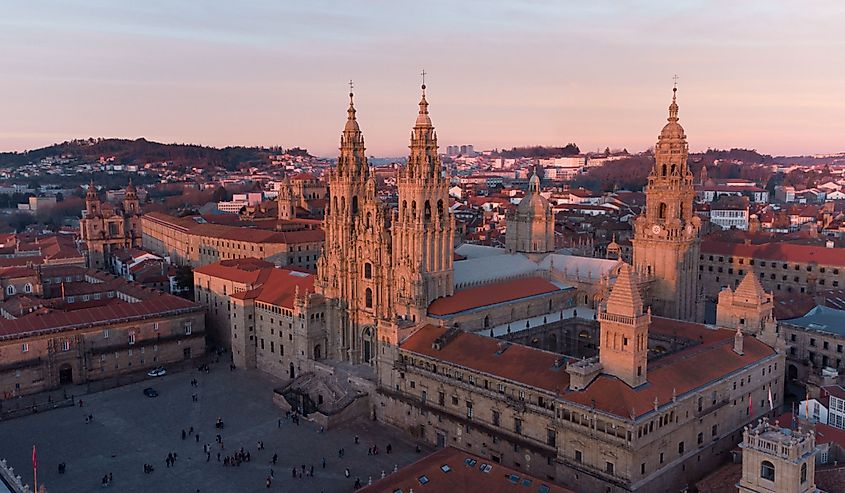
Given the nature of religious faith, it is impossible to parse fact from fiction, or allegory from history. In the first decades of the Common Era (Anno Domini), there was an influential rabbi by the name of Jesus. Maybe. And this self-proclaimed son of God had twelve disciples or Apostles. Maybe. After the crucifixion of Christ, one of those Apostles, Saint James (aka St. James the Greater), brought the Word to the pagans and Romans of the Iberian Peninsula. Maybe. And after the patron saint of soon-to-be Spain was martyred in the Holy Land (Jerusalem), in 44 AD, his body was sent back to the furthest reaches of his teachings, which at the time was the end of the known world: Finisterre. Maybe. Some legends even state that his beheaded corpse was sent off in a stone boat with no rudder or sails, guided to shore by a guardian angel, and then pulled by an ox to Iria Flavia, in the modern-day municipality (concelho) of Padrón – just outside of what would become Santiago de Compostela. Again, maybe.
Flash forward nearly eight centuries, to around 814 (or at least sometime between 813 and 830) AD. A hermit by the name of Pelagius (or Paio) was beckoned by mysterious lights (some say stars) to the long-forgotten tomb of Saint James in the middle of a forest. He reported his discovery to the local bishop, Theodomir. After further examination, the remains were determined to be that of Saint James, and two of his followers. News was quickly brought to Alfonso II – King of Asturias and Galicia. The pious ruler then made what many consider to be the first Camino de Santiago pilgrimage – leaving from Oviedo and using a route akin to the current Camino Primitivo (Primitive Way). Alfonso II ordered a small church to be built over the ruins – the magnet for all subsequent pilgrims, and the predecessor to the great cathedral that now stands above Praza do Obradoiro. Because of the story surrounding the hermit's discovery, the site became known as Campo de Estrellas, or Campus Stellae, meaning "Field of Stars." This eventually evolved into the city's current name, Santiago de Compostela.
Rather than interject the entire tale with tentative qualifiers, the reader can exercise his/her judgment regarding the validity of these events. There have been multiple confirmations passed by authorities of the Catholic church, but to this day, there has not been conclusive proof that the remains of St. James are stored in, around, or under the Cathedral of Santiago de Compostela. But a fantastical tale was not the sole impetus for the creation and expansion of the Camino. Politics, commerce, and war all played their part.
The Camino de Santiago Takes Off
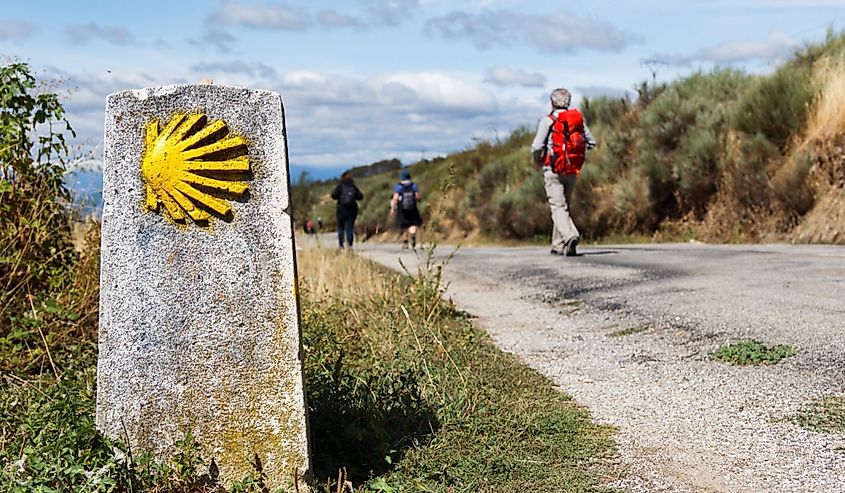
The 11th century is when the number of annual pilgrims jumped significantly. Up until this point, the drawn-out conflicts between Christians and Muslims on the Iberian Peninsula, and the latter's dominance of the Kingdom of Castilla, in particular, relegated Catholic pilgrims to the safety of the original Camino Primitivo, and the old Roman routes through the Cantabrian Mountains in the North (Camino del Norte). A turning of the tide in the Reconquista, combined with the fortification of Compostela, and the joint vision of Kings Sancho III of Pamplona (or Sancho the Great), Sancho Ramírez, and Alfonso VI, opened all kinds of new doors.
The formulation of the Camino Francés not only gave pilgrims a supported route through the modern-day autonomous communities of Aragon, Navarre, La Rioja, Castilla y León, and Galicia, but it allowed for the growth of powerful towns along the way. The steady influx of spiritual vagabonds meant churches, hospitals, bridges, and even defensive structures (such as Ponferrada's Templar castle) all had good reason to sprout up. The rulers of each respective kingdom even incentivized citizens to settle in the budding Camino-adjacent communities.
The goal was partly reverence, but by having strong settlements throughout the core of the land, the Christian kingdoms were able to push back against the Moors with strength of culture and arms. Before long, St.-Jean-Pied-du-Port, Pamplona, Logroño, Burgos, León, Astorga, Ponferrada, and of course, Santiago de Compostela were marvels to visit, and forces to be reckoned with. This isn't to say there weren't continued fluctuations in outcomes, but the direction of flow was generally favorable for the followers of Saint James.
As infrastructure expanded and word spread about the relics of Saint James in Compostela, thousands of pilgrims began taking to the trails/roads each year. Traditionally, people would simply walk out their front door, or group up at their local parish (safety in numbers), and take whatever route seemed most sensible – connecting Camino communities wherever possible. This is why there is such an extensive network of pilgrimages to choose from today. With so many options (but still a high degree of uncertainty), it wasn't long before the first guidebook, the Codex Calixtinus, gave prospective pilgrims a much-needed resource. This 12th-century text not only contains helpful information about pilgrim-friendly sanctuaries and points of interest, but also a backstory on the Camino de Santiago, prayers to contemplate, miracles to celebrate, and plenty more to spiritually fuel the long walk. Additionally, Pope Calixtus II declared that when Saint James' Day (July 25th) landed on a Sunday, this would be celebrated as a "Holy Year." All of these factors converged to greatly increase the potency of the pilgrimages.
An Era of Decline Befalls the Camino
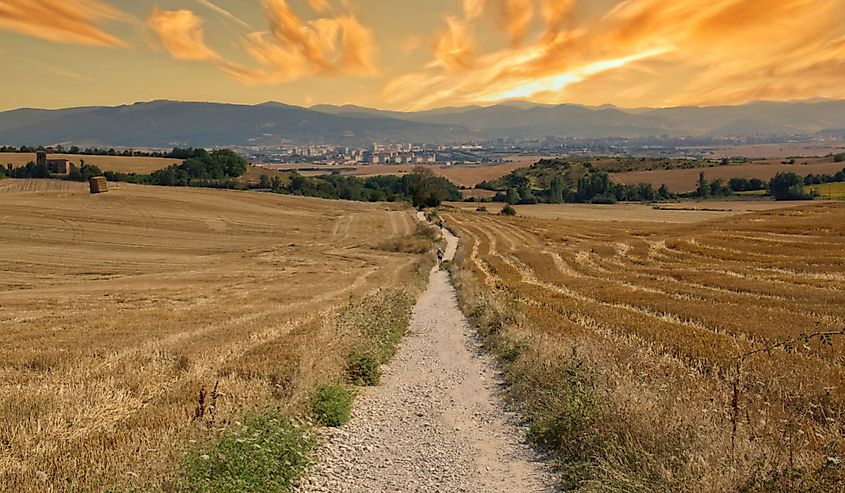
The history of the Camino de Santiago undulates as much as cross-country paths. The growth and prosperity of the Middle Ages (which peaked at about 250,000 travelers per year between the 12th and 13th centuries) was met, in kind, by several diminishing forces in subsequent centuries. For starters, the Protestant Reformation of the 1500s decried the Catholic indulgence system (i.e. earning or even purchasing absolution for one's sins). One of the core concepts of the Camino is that pilgrims can atone for their past misdeeds through prayer and suffering. This is why "The Way" is supposed to be challenging. Many people set forth with this goal in mind, and some even hired others to walk to Compostela for them. Thus, the rise of Protestantism deemphasized the Camino.
A similar diminishing of the spiritual value of the Camino came as a consequence of the Age of Enlightenment. This 17th and 18th-century movement swept across Western Europe, encouraging reason and evidence-based world views, which were in direct contrast to the authority of the Catholic church and the religious faith of individual pilgrims.
Another widespread event that was detrimental to the Camino was the ecclesiastical confiscations of Mendizábal. Between 1835 and 1837, the Spanish government seized monastic lands and properties, thereby eliminating much of the supportive infrastructure that pilgrims relied upon.
Throughout these ideological conflicts, Spain also clashed on the battlefield with England and France. Whenever this occurred, the influx of international pilgrims would understandably drop.
Modern Day Pilgrimages
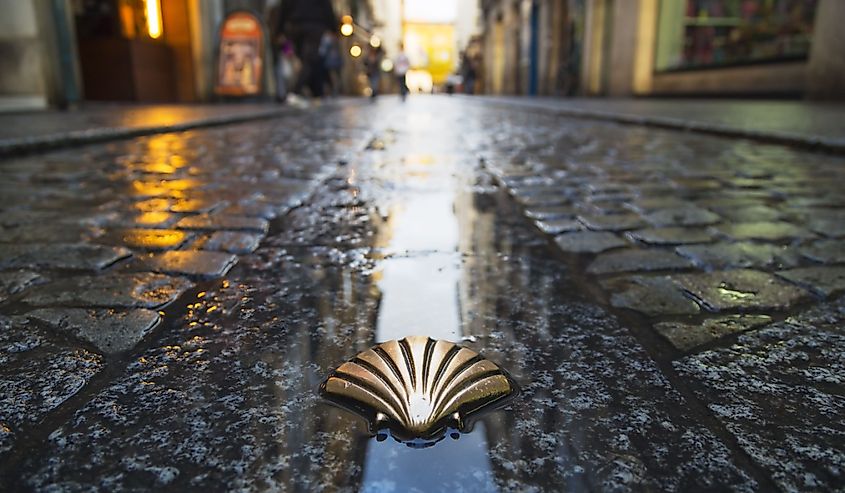
One cannot help but notice the parallels between the history of the Camino de Santiago and the core Christian story. After its miraculous rise in popularity and subsequent persecution, it was due for a resurrection. This took place in a few stages, beginning in the 1980s. During this decade, Father Elías Valiña Sampedro of O Cebreiro took it upon himself to mark and promote the historic pilgrimage. With help from the Associations of the Friends of the Camino de Santiago, the core routes are now well-marked with a combination of yellow arrows, kilometer posts, and the iconic scallop seashell logos (note: Many pilgrims would return home with a shell from the shores of Finisterre after completing their journey. It served as proof of a successful pilgrimage, as well as a humble souvenir).
Read More: Bom Caminho I: Starting A Walk Across Portugal
While this campaign was underway, Santiago de Compostela was also designated as the new capital of the autonomous community of Galicia. This drew even more positive attention back to its Camino roots. The resurgence was underway. In 1985 a mere 1,245 pilgrims walked into Compostela, but that jumped up by nearly two orders of magnitude by 1993, which was the same year that UNESCO recognized the historical, cultural, and architectural prowess of the Camino de Santiago – choosing to crown the Camino Francés as a World Heritage Site. The network of pilgrim paths was also named a Cultural Route of the Council of Europe in 1987.
Read More: Bom Caminho II: The Rhythm of the Portuguese Way
The upward trend only continued into the 21st century. In the Holy Year of 2010, 270,000 pilgrims reached Santiago. In 2018, that number jumped to 327,000. And last year (2022), a registered 439,000 people made a trek of at least 100 kilometers, or a cycle of 200+km (yes, tens of thousands of pilgrims now choose to bike some of the Caminos) to arrive at the grand Cathedral in Praza do Obradoiro. These are the minimum distances required (demonstrated by getting at least two stamps per day on one's pilgrim passport) to receive certification, and absolution.
As the popularity spiked in recent years, private and public albergues (i.e. pilgrim hostels) once again popped up in nearly every town along the way. Compelling media also capitalized on the unique subject matter. Famous author Paulo Coelho penned The Pilgrimage in 1987. In 2010, the Emilio Estevez/Martin Sheen film, The Way, captivated audiences, followed by the documentary, 6 Ways to Santiago, which experienced great commercial success since its release in 2013. Plenty of other books and films have shared experiences from the ancient pilgrimage, encouraging ever more people to get out and walk to the Northwest of Spain.
Read More: Bom Caminho III: The Beauty of the Coastal Way
Between the medieval reverence and modern renaissance, the Camino de Santiago has been grouped with Rome and Jerusalem as the most significant pilgrimages surrounding the Christian faith. And while many pilgrims still maintain these spiritual motivations, there are just as many backpackers out there on any given day of the year (but mostly between Spring and late Fall) for differing reasons. Walking one of the Caminos is an excellent physical and mental challenge. It is also a great way to immerse oneself in the small-town culture of France, Portugal, and/or Spain. The people, food, and sights along the way stand apart from the classic tourist stops and major cities. Yes, the process exacts a toll in the form of sweat, blisters, and weeks (or even months) away from "the real world," but the occasional suffering makes the rewards that much sweeter. Perhaps the martyrs were onto something.
Buen Camino!











